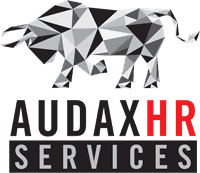Before he became vice president of process quality operations at Bank of America in Jacksonville, Fla., David Trenholm was an aviator in the United States Navy. After deciding to retire at 42, he was accepted into a competitive two-year rotation program for military veterans in the bank’s global technology and operations division.
The program was launched a decade ago as part of the bank’s commitment to helping military veterans transition into the civilian workforce. What started out as a small cohort of four or five prospective employees has grown to about 25 military veterans per cohort, and it has become an important talent pipeline for the bank in conjunction with more traditional rotation efforts.
The goal of the program is to eventually hire participants either into one of the jobs they held during their rotation or into another position at the bank. For David Trenholm, that turned out to be the second position in his rotation.
“The transition from the military to banking was a bit of a culture shock because the industry has a whole different language,” Trenholm said. “What I valued most about the program was the opportunity to try out different roles and network with people throughout the organization.”
Job rotation programs are company-sponsored initiatives that provide opportunities for new or existing employees to work in different roles or departments within the organization for a predetermined period of time, often ranging from a few weeks to two years. At the end of the final rotation, most participants transition into permanent full-time roles.
“Rotation programs can be used as part of a career development strategy for an existing workforce by providing an opportunity for them to develop and advance in their careers,” said B. Lynn Ware, CEO of Integral Talent Systems, an HR consulting firm in Mountain View, Calif. “It’s also a way to attract new talent and help new graduates try out different roles and figure out what works best for them.”
Rotation programs typically are seen as a way to boost the employee value proposition, said Brandon Fluckiger, an HR business partner at Greenix Pest Control in Orem, Utah. “It’s a great way to attract and retain talented employees.”
Although Greenix doesn’t currently have a rotation program, Fluckiger is interested in creating one for select call center employees. “There’s a lot of turnover in entry-level positions when employees don’t see any opportunities to grow and advance,” he said. “A rotation program can provide them with the opportunity to gain more experience and learn new skills.”
Rotation programs can also be used as a form of cross-training, said Ware. “With job rotation, you’re really creating your internal talent pool for the role.”
Have a Clear Purpose and Objective
When starting a new program (or expanding an existing one), it’s important to define the purpose and goals of the program and then create a structure to support that mission.
For example, Deloitte’s Client & Market Growth division created SHINE, a rotational program that brings in recent college graduates. “It was originally created to develop junior talent, fill open roles and accelerate their onboarding by exposing them to a wide variety of projects and development opportunities,” said Kristen Sarlo, strategic resource management leader in Arlington, Va.
“The vision of the program is to develop a well-rounded, prepared and sufficiently skilled professional to effectively support business priorities, while also ensuring participants can transition from the SHINE program into a specific role in an area of interest,” Sarlo said.
At the University of Wisconsin-Madison, HR conducted a robust needs analysis before launching its first job rotation program in 2020. The analysis reviewed:
“When we looked at the data to see where we had the most need, we saw that there were more than 200 positions that we were going to need to fill with early-career professionals,” said Sara Hanson, the university’s director of talent pathways.
This led to the creation of a rotation program with two tracks: one in HR and one in finance. The first two cohorts each began with four participants (who all transitioned into permanent roles) and then grew organically to 12 participants. The school recently added an IT track with six participants, she said.
Each track is created with a specific set of goals in mind. For example, the HR track is designed to help rotators decide whether to pursue a generalist path into management or to specialize in an HR function, such as compensation or talent management.
While many rotational programs target new college graduates or early-stage careerists, the fledgling program at Cochlear is part of the global medical device company’s internal mobility strategy for all employees.
“About 30 percent of our open positions are filled internally, so we see an internal mobility program as an effective way to develop and retain employees,” said Haley Burrow, the Denver-based manager of talent acquisition for the Americas region.
“The program is an opportunity for individual employees to expand their range of opportunities and visibility and make a name for themselves within the company,” she said. “As an employer, it’s a chance to discover hidden gems. You may find out that some of your employees have skills and experience that you may not be aware of.”
The Cochlear program has buy-in from senior leadership, which has approved the creation of a new position for a director of internal mobility who will launch and oversee the program with input from HR and other key stakeholders.
Form Follows Function
“The key to a successful rotational program lies in its intent and execution,” said Joan Goodwin, national performance management practice lead and a talent specialist at Deloitte Consulting in Cypress, Calif. “These three core factors are crucial: integrating skills-based experiences into assignments, providing effective coaching and mentoring and ensuring program transparency.”
When determining how to best structure the program, Goodwin recommends keeping the following questions in mind:
Ware emphasized the importance of structuring programs around organizational priorities. She cited the example of a construction company that is anticipating a need for project managers over the next few years as a result of growth and turnover. The company is using a rotation program to help new and existing employees develop the skills and experience they need by rotating through different project management roles throughout the organization.
HR and Beyond
“Think of HR as the orchestrator of the program. Their job is to ensure the program strikes the right balance of benefits for both the business needs and the individual aspirations of the participants,” Goodwin said. “HR should strive to achieve a seamless experience where everyone involved has the right tools and resources they need to be successful.”
At SHINE, the campus team collaborates with internal talent specialists at every stage of the program’s lifecycle. “Our campus team actively aids in recruitment efforts to ensure the selection of top-notch candidates. And we work in tandem with our talent business advisor to coordinate compensation planning, promotions and smooth transitions as participants graduate from the program,” Sarlo said.
However, “rotation programs are not just HR programs,” Ware said. “You have to line up sponsors [and] get executive buy-in and line manager involvement.”
When considering the role of various stakeholders, it’s important not to overlook helping rotators take a stake in their own success. When selecting candidates for the University of Wisconsin program, recruiters and hiring managers look for candidates who have a strong desire to learn, are flexible and adaptable, and have the ability to advocate for themselves. Once the candidates have been selected, the university uses a cohort model that encourages participants to bond with and learn from each other.
That model includes four cornerstones:
To be sure, the launch of a new rotation program is an iterative process that requires constant assessment and adjustment. “The best rotation programs didn’t always start that way. Applying feedback, tracking metrics and assessing how goals are met are all critical evaluation practices that are likely to achieve the best outcomes,” said Fluckiger.
Arlene S. Hirsch is a career counselor and author in Chicago.
This content was originally published here.



